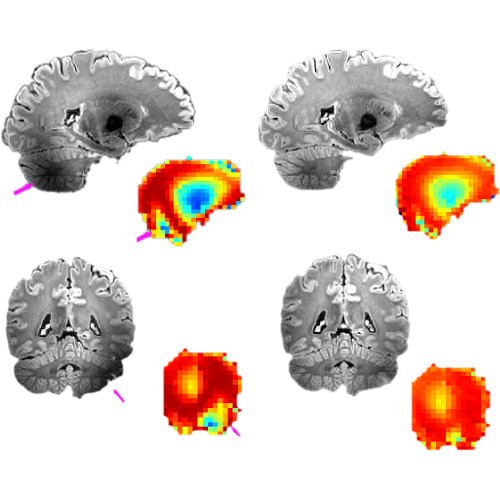Application
Direct signal control provides reduced transmision field inhomogeneity allowing to recover regions of low signal without increasing imaging time or interecho spacing.
Contributors
Arian Beqiri1, Hans Hoogduin2, Alessandro Sbrizzi2, Joseph V. Hajnal1,3, Shaihan J. Malik1
Estimated cost
Free
Progress
Stable release, MIT License
Direct signal control consistently enables improved imaging with no dropouts in signal seen over the entire brain volume. The universal direct signal control solutions also consistently improved imaging despite not being optimized specifically for the subject being imaged.
It has been demonstrated that the RF shims can be optimized by using a spatially resolved extended phase graph signal model to produce spatially uniform echo amplitudes with a desired target temporal behaviour.
The DSC method aims to optimize the predicted signal with respect to a predefined target; choice of this target is therefore important. In this work, this method aims to achieve optimal contrast from a predefined base sequence. Nevertheless, this could be adapted to include other conditions such as SAR minimisation or improved SNR for specific reference relaxation times, depending on the clinical application.
Note that, given manufacturer RF shim related IP constrains, the implementation of the sequence currently needs to be programmed by the user.
Publications
Affiliations
1Department of Biomedical Engineering, School of Biomedical Engineering & Imaging Sciences, King’s College London, King’s Health Partners, St Thomas’ Hospital, London, United Kingdom
2Center for Image Sciences, University Medical Centre Utrecht, Utrecht, Netherlands
3Centre for the Developing Brain, School of Imaging Sciences & Biomedical Engineering, King’s College London, King’s Health Partners, St Thomas’ Hospital, London, United Kingdom


